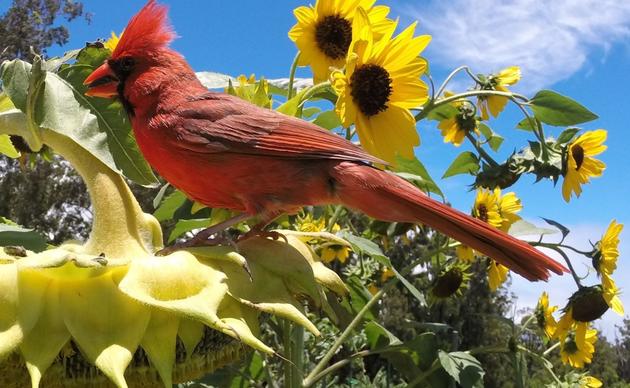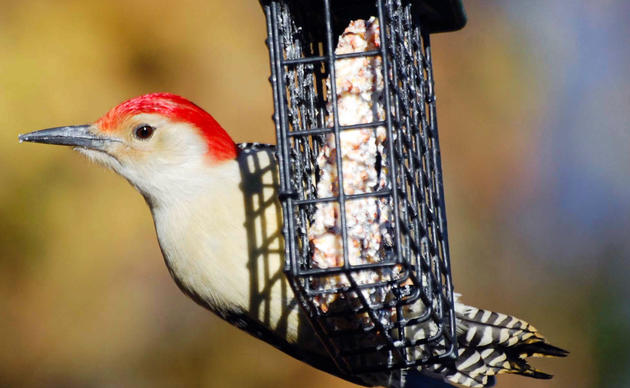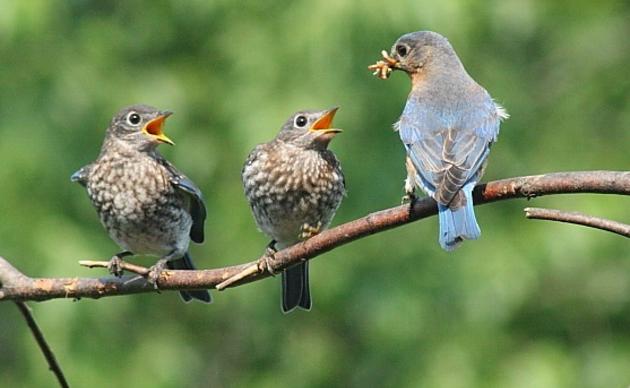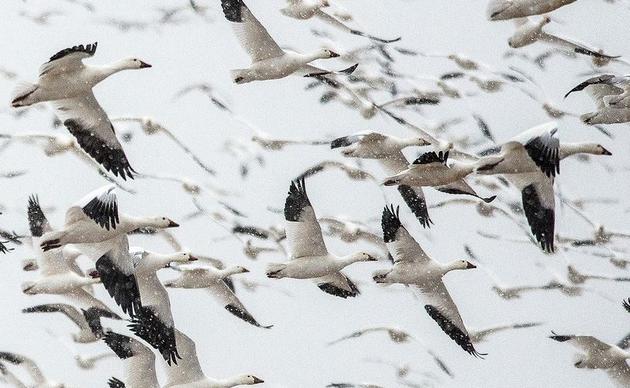Choosing a Bird Feeder
There are a variety of feeders to accommodate specific types of birds and their diets. Choosing more than one will help attract more species and avoid feeder congestion.
Ground feeders -These simple screen-bottomed trays typically sit several inches off the ground or your deck and help to keep grain or seeds and bird droppings from coming in contact with each other. Some feeders have covers to keep out snow; others may have wire mesh to keep out squirrels and large birds like crows. Ground feeding tables should be placed in open areas at least 10 feet from the nearest tree or shrub to give birds a chance to flee predators. Doves, juncos, sparrows, towhees, goldfinches and cardinals are all likely to visit ground feeders. Avoid using ground feeders if cats are likely to pounce from nearby shrubs.
Sunflower-seed tube feeders - If you are going to put out just one feeder, this is your best choice. Be sure to select a model with metal ports around the seed dispensers to protect the feeder from nibbling squirrels and house sparrows. Hang the feeder at least five feet off the ground and try to position it near a window where you can enjoy the visitors, which are likely to include Chickadees, Titmice, Nuthatches, American Ggoldfinches, Pine Siskins and Purple and House Finches.
Suet feeders - Suet is popular with Titmice, Chickadees, Nuthatches and Woodpeckers. Wrens, creepers and warblers will also occasionally peck at suet. While you can hang suet chunks in a mesh onion bag, you can also purchase cage feeders. Some people like to make their own suet "puddings" by grinding the suet and adding seeds, and create homemade suet feeders by packing the mixture into the crevices of large pine cones. Suet feeders can be hung from trees, from poles near other feeders, or from a wire stretched between trees. Avoid feeding suet when temperatures rise into the 80-degree range, as it can turn rancid.
Hopper feeders - Hopper feeders keep several pounds of mixed seed dry and ready for hungry birds. Birds hopping on the feeder trigger the release of seeds. Hopper feeders should be positioned on a pole about five feet off the ground and will draw all the species that tube feeders attract, along with larger birds like Blue Jays, Grackles, Red-winged Blackbirds and Cardinals.
Thistle (nyjer) feeders - Especially designed to dispense thistle (nyjer) seed, these feeders have tiny holes that make the seed available only to small-beaked finches such as American Goldfinches, Redpolls and Pine Siskins. Hang your thistle feeder from a tree or place it on a five-foot pole near other feeders. Squirrel baffles will help to protect the feeder.
Choosing your feeder is just the first step. Be sure to read up on our other bird-friendly topics to keep your feathered friends fed and safe! For more about seed-selection, click here!
Donate to Audubon
Help secure the future for birds at risk from climate change, habitat loss and other threats. Your support will power our science, education, advocacy and on-the-ground conservation efforts.





